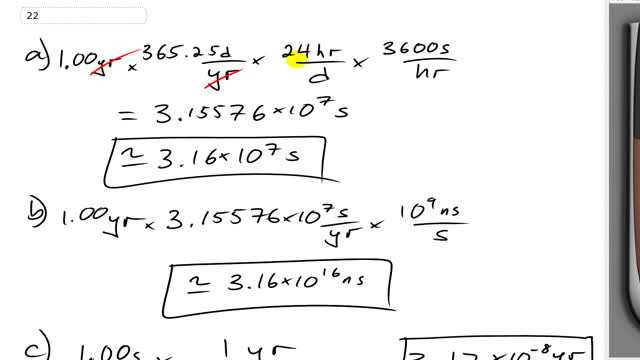
- How many seconds are there in 1.00 year?
- How many nanoseconds are there in 1.00 year?
- How many years are there in 1.00 second?
b)
c)

In order to watch this solution you need to have a subscription.
This is Giancoli Answers with Mr. Dychko. In part (a), we are turning years into seconds so we multiply 1 year by 365.25 days per year and then we have to get rid of the days now so we have 24 hours per day and now we need to get rid of the hours and we have 3600 seconds per hour and we are left with seconds. That works out to 3.16 times 10 to the 7 seconds in a year. In part (b), we have to turn that into nanoseconds so we have 1 year times— this is now a conversion factor that we can use, seconds per year— 3.15576 times 10 the 7 seconds per year, years cancel and then we have 10 to the 9 nanoseconds for every second so the seconds cancel and we are left with 3.16 times 10 to the 16 nanoseconds. And then the number of years in a second, well we multiply 1.00 seconds times 1 year for every 3.15576 times 10 to the 7 seconds and we are left with 3.17 times 10 to the minus 8 years in 1.00 seconds and I just moved this calculator over in case you want to see those the part (a) and the part (c) calculations that I did up there.
For part b, isn't nanoseconds 10^-9? Or is it different when used in a conversion factor? I am confused with Giga 10^9.